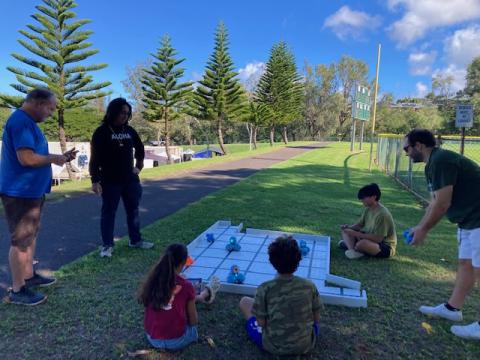Body
Image

Learning from the community to understand layers of trauma and apply trauma-informed STEM education as a tool to support processing, recovery, and healing
Natural disasters have increased significantly over the past few decades. The UN has released a study that the number of wildfires is expected to rise by 50% by 2100 (United Nations Environment Programe, 2022). The most recent example of this is the Hawaiian island community of Maui. As residents and STEM educators in the State of Hawaiʻi with rich and deep roots in communities on Maui, we apply the STEMS2 (Science, Technology, Engineering, Mathematics, Social Sciences and Sense of Place) Framework (O’Neill et al., 2023) to map the multiple layers of trauma from these wildfires and explore how trauma-informed STEM education might serve as a tool to support processing, recovery, and healing. project will consist of three iterative phases. The primary focus of this RAPID project is Phase 1. Engaging with our well-established networks within the community, Phase 1 focused on conducting a series of semi-structured interviews, focus groups, and talk-story interviews (O’Neill et al., 2023) using snowball sampling (Parker et al., 2019). The primary goal of Phase 1 is to learn from educators and students in the community and determine the layers of trauma present as a result of their wildfire experiences and needs in reaction to STEM education. Lessons learned in Phase 1 will inform the intervention design phase (Phase 2) and the implementation phase (Phase 3) as appropriate based on community invitation and needs.
Pillar 1: Innovative Use of Technologies in Learning and Teaching
The innovation in this work is intentionally applying a trauma-informed approach in learning and teaching with technologies such as robots. This approach enhances student safety and well-being. It acknowledges the impact of trauma on learning, fosters a supportive environment, and uses digital tools to create safe, inclusive educational experiences that prevent retraumatization
Pillar 2: Partnerships for Career and Workforce Preparation.
The focus of this work is on learning how to build trauma-informed STEM learning environments. Part of this process has required leading from student wonder rather than centering career and workforce preparation.
Pillar 3: Strategies for Equity in STEM Education
Creating safe and supportive learning environments is key - helping educators recognize and respond to the impact of trauma on students, fostering a sense of safety and belonging in STEM learning. Addressing barriers to STEM access is also crucial, as understanding the effects of trauma allows educators to provide accommodations and targeted support to help students overcome obstacles and participate. Diversifying STEM role models is important too, such as highlighting diversity by having youth work collaboratively with

Discipline(s)
Interdisciplinary
Target Gradespan(s)
Elementary school (K-5)
Middle school (6-8)
High school (9-12)
Target Participant(s)
Youth / students
Educators
Parents / caregivers / families
Project Setting(s)
Informal Education
Category
Exploratory